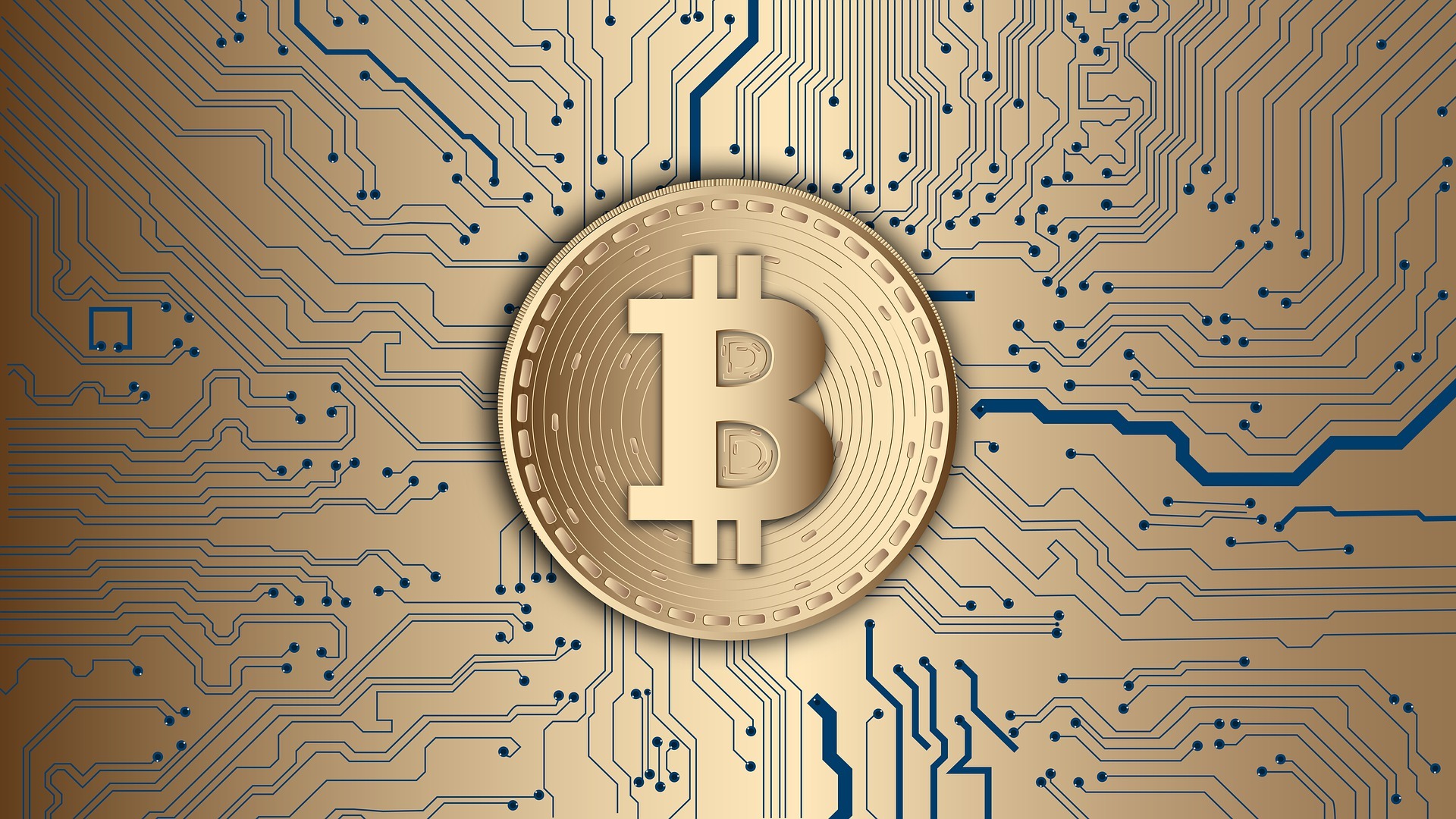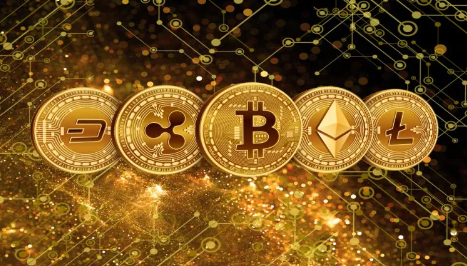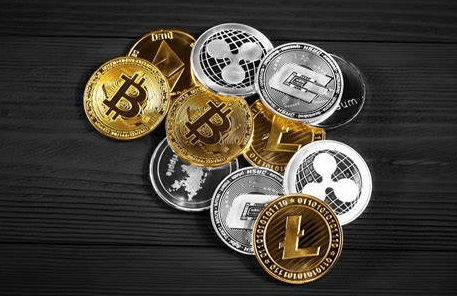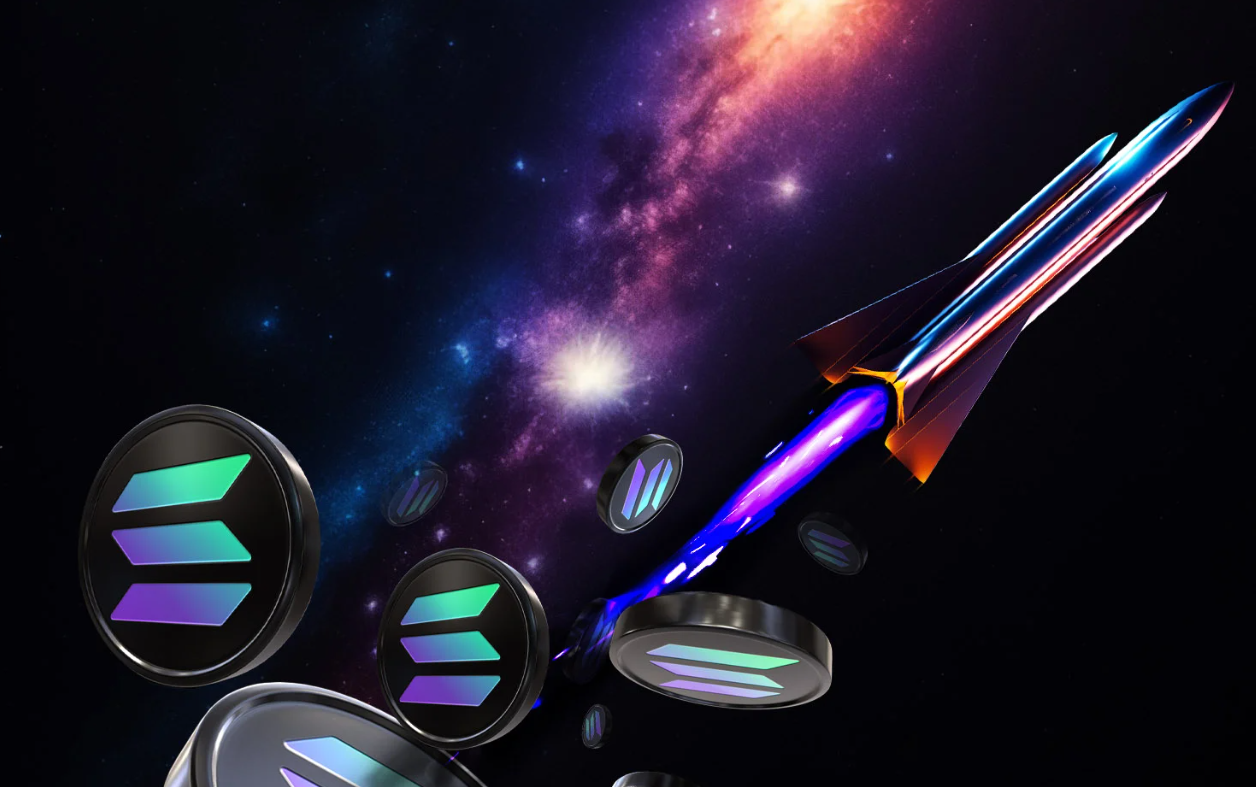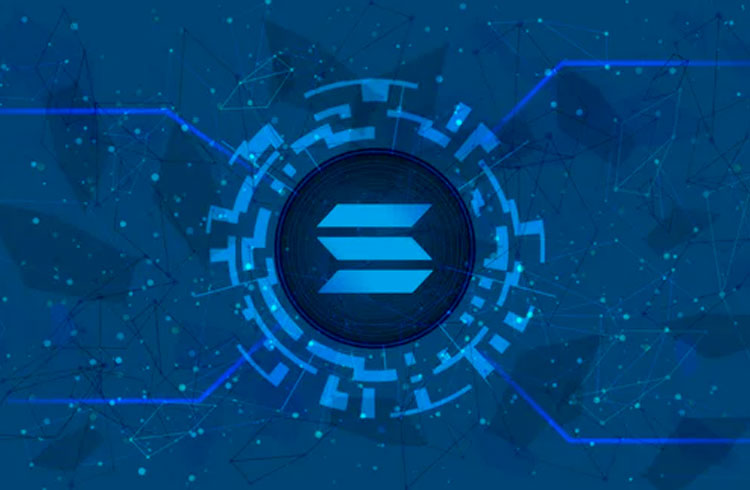Table of Contents
Cryptocurrencies are digital assets that use cryptography to secure transactions and control the creation of new units. Since the emergence of Bitcoin in 2009, the crypto market has expanded dramatically, and today, there are many different types of cryptocurrencies serving various purposes. In this article, we will analyze the main categories of cryptocurrencies and their specifics.
Types of Cryptocurrencies
- Payment Cryptocurrencies (Digital Currencies)
- Stablecoins (Stable Cryptocurrencies)
- Platform Cryptocurrencies (Smart Contract Platforms)
- DeFi Cryptocurrencies (Decentralized Finance)
- NFT Cryptocurrencies (Non-Fungible Tokens)
- Meme Cryptocurrencies
- Privacy Cryptocurrencies (Privacy Coins)
- Cryptocurrencies for the Internet of Things (IoT)
- AI Cryptocurrencies (Artificial Intelligence-Based Cryptocurrencies)
- P2E Cryptocurrencies (Play-to-Earn Cryptocurrencies)
1. Payment Cryptocurrencies (Digital Currencies)
Payment cryptocurrencies are designed primarily as a means of exchange, functioning as digital alternatives to traditional fiat currencies. They enable users to send and receive transactions quickly and securely without intermediaries. Many of these cryptocurrencies operate on decentralized networks, ensuring censorship resistance and financial inclusion for users worldwide. Over the years, payment cryptocurrencies have gained adoption in various sectors, including e-commerce, remittances, and even government-backed initiatives.
As the cryptocurrency market matures, more businesses and merchants are beginning to accept payment cryptocurrencies as a legitimate method of transaction. While Bitcoin remains the most dominant payment cryptocurrency, others such as Litecoin and Bitcoin Cash have emerged to offer improvements in transaction speed and efficiency. Their continued evolution suggests that digital currencies will play a key role in the future of global finance.
These cryptocurrencies are primarily designed for transactions and function as digital alternatives to traditional currencies. They are decentralized and enable fast, low-cost, and secure transfers.
Bitcoin (BTC)
Bitcoin is the first and most well-known cryptocurrency, created by Satoshi Nakamoto. It serves as digital gold and a store of value. Its main advantages include decentralization, limited supply (21 million BTC), and widespread adoption. Bitcoin has become an essential part of the global financial system, with institutions and individuals alike using it as a hedge against inflation and economic uncertainty. In addition, Bitcoin’s adoption by countries such as El Salvador as legal tender demonstrates its potential role in reshaping the future of finance.
Litecoin (LTC)
Litecoin was created as “silver to Bitcoin’s gold” and offers faster transaction times and lower fees. It uses a different hashing algorithm (Scrypt) and has a higher maximum supply (84 million LTC). Due to its faster block generation time, Litecoin is often used for everyday transactions and micropayments. Many merchants and payment processors support Litecoin, further reinforcing its role as a viable alternative to Bitcoin for daily transactions.
Bitcoin Cash (BCH)
Bitcoin Cash emerged from Bitcoin in 2017 as a hard fork, aiming to increase block size and improve scalability. It offers faster and cheaper transactions than Bitcoin. Over time, it has positioned itself as a strong alternative for peer-to-peer electronic cash transactions, particularly in regions where traditional banking infrastructure is lacking. Bitcoin Cash continues to develop with additional upgrades focused on usability and broader merchant adoption.
2. Stablecoins (Stable Cryptocurrencies)
Stablecoins are designed to maintain a stable value by being pegged to traditional assets such as fiat currencies, gold, or a basket of assets. They address the issue of volatility commonly associated with cryptocurrencies, making them a more practical choice for transactions, savings, and remittances. Unlike other cryptocurrencies, stablecoins do not experience dramatic price fluctuations, which makes them a preferred option for those who seek stability in the crypto market.
Stablecoins play a crucial role in the decentralized finance (DeFi) ecosystem by providing liquidity and facilitating trading pairs on decentralized exchanges. They also serve as a bridge between the traditional financial system and the digital asset world. With continued regulatory developments, stablecoins are expected to become even more integrated into mainstream finance and payment systems.
Stablecoins are cryptocurrencies pegged to the value of traditional assets, such as fiat currencies or commodities. They serve to minimize volatility in the crypto market and are often used for value storage or in the DeFi sector.
Tether (USDT)
Tether is the most well-known stablecoin pegged to the US dollar (1 USDT = 1 USD). It is used for trading and storing value without the volatility of typical cryptocurrencies. Its high liquidity and widespread adoption make it a preferred choice for traders and investors looking to move funds seamlessly across different exchanges. Despite its popularity, concerns over Tether’s reserves and transparency remain a topic of discussion among regulators and market participants.
USD Coin (USDC)
USDC is another stablecoin pegged to the dollar and managed by Circle and Coinbase. It is frequently used in DeFi applications. USDC is considered one of the most transparent stablecoins due to its regular audits and clear backing by fiat reserves. The growing adoption of USDC in financial applications highlights its importance as a reliable digital representation of the US dollar.
DAI
DAI is a decentralized stablecoin created by MakerDAO and backed by various cryptocurrencies. Its value is algorithmically maintained at 1 USD. Unlike centralized stablecoins, DAI operates through smart contracts, making it resistant to censorship and external control. DAI’s decentralized nature provides an alternative to fiat-backed stablecoins, ensuring that users maintain control over their assets.
3. Platform Cryptocurrencies (Smart Contract Platforms)
Platform cryptocurrencies are digital assets that power blockchain networks capable of supporting smart contracts and decentralized applications (DApps). Unlike payment cryptocurrencies, which are primarily used for transactions, platform cryptocurrencies enable developers to build and deploy applications on their blockchain infrastructure. These platforms provide the foundation for innovations such as DeFi, NFTs, and decentralized autonomous organizations (DAOs).
With their advanced functionalities, platform cryptocurrencies such as Ethereum, Cardano, and Solana have attracted significant adoption in various industries. Developers and businesses leverage these blockchains to create secure, transparent, and decentralized solutions. As blockchain technology continues to evolve, platform cryptocurrencies are likely to shape the future of digital finance, governance, and beyond.
Ethereum (ETH)
Ethereum is the most significant platform for smart contracts, allowing the development of decentralized applications (DApps). It uses its native token, ETH, for executing transactions and paying computational fees (GAS). Ethereum’s upcoming upgrades, such as Ethereum 2.0, aim to improve scalability, security, and energy efficiency through the transition to Proof of Stake (PoS). The Ethereum ecosystem continues to expand, with thousands of DApps and developers contributing to its innovation.
Cardano (ADA)
Cardano is a platform focused on security and scalability. It uses Proof of Stake (PoS) and aims to create a sustainable ecosystem for DApps and smart contracts. Cardano’s layered architecture ensures greater flexibility, making it a promising blockchain for large-scale enterprise adoption. With ongoing research-driven development, Cardano aims to create a robust and scalable blockchain infrastructure for real-world use cases.
Solana (SOL)
Solana is a highly scalable blockchain platform with low transaction fees and high speed. It is popular among DeFi and NFT project developers. Solana’s unique consensus mechanism, Proof of History (PoH), allows it to process thousands of transactions per second, making it one of the fastest blockchains available. Its rapid adoption by developers and projects in the crypto space highlights Solana’s potential as a major competitor to Ethereum.
4. DeFi Cryptocurrencies (Decentralized Finance)
DeFi cryptocurrencies power financial applications that operate without traditional intermediaries such as banks or brokers. They enable decentralized lending, borrowing, trading, and yield farming, offering users a trustless and transparent alternative to traditional finance. By utilizing smart contracts, DeFi platforms allow users to execute financial transactions without needing a centralized authority, reducing costs and improving accessibility.
One of the key advantages of DeFi is its inclusivity, allowing individuals from around the world to access financial services without barriers. However, due to its rapid innovation and lack of regulation, DeFi also presents risks, including security vulnerabilities and smart contract failures. Despite these challenges, the DeFi ecosystem continues to grow, attracting both retail and institutional investors.
These cryptocurrencies power financial services without intermediaries, such as lending, borrowing, and decentralized exchanges.
Uniswap (UNI)
Uniswap is one of the most popular decentralized exchanges (DEXs), allowing users to trade tokens directly from their wallets without intermediaries. The UNI token is used for governance and provides incentives for liquidity providers.
Aave (AAVE)
Aave is a leading DeFi lending platform that enables users to lend and borrow cryptocurrencies without intermediaries. The AAVE token is used for governance and staking within the protocol.
5. NFT Cryptocurrencies (Non-Fungible Tokens)
NFT cryptocurrencies facilitate the creation, ownership, and transfer of unique digital assets on the blockchain. Unlike traditional cryptocurrencies, which are fungible and interchangeable, NFTs are unique and cannot be duplicated. They have gained popularity in the art, gaming, and entertainment industries, allowing creators to tokenize digital assets and establish provable ownership.
The rise of NFT marketplaces has opened new revenue streams for artists, musicians, and content creators. Additionally, NFT technology is expanding into other sectors, such as real estate and intellectual property rights. While the NFT space is still evolving, it presents exciting opportunities for digital ownership and decentralized economies.
NFT cryptocurrencies are used for digital ownership in areas like art, gaming, and collectibles.
Axie Infinity (AXS)
Axie Infinity is a blockchain-based play-to-earn game where players collect and battle digital creatures known as Axies. The AXS token is used for governance and in-game transactions.
The Sandbox (SAND)
The Sandbox is a decentralized virtual reality platform that allows users to create, own, and monetize gaming experiences. The SAND token is used for transactions and governance within the ecosystem.
6. Meme Cryptocurrencies
Meme cryptocurrencies originated as humorous or satirical digital assets but have gained significant popularity due to social media and community-driven movements. They often rely on viral marketing and internet culture to gain traction, making them highly speculative investments. While some meme coins have developed real-world use cases, many exist purely as speculative assets.
Despite their humorous beginnings, some meme cryptocurrencies, such as Dogecoin and Shiba Inu, have built large, dedicated communities. Their success demonstrates the power of decentralized finance combined with internet virality. While meme cryptocurrencies remain highly volatile, their influence on market trends and retail investor participation cannot be ignored.
Dogecoin (DOGE)
Dogecoin is the original meme cryptocurrency that started as a joke but gained mainstream adoption through community support and endorsements from celebrities like Elon Musk.
Shiba Inu (SHIB)
Shiba Inu is another popular meme cryptocurrency that operates within its own decentralized ecosystem, including DeFi applications and an NFT marketplace.
7. Privacy Cryptocurrencies (Privacy Coins)
Privacy cryptocurrencies are designed to enhance transaction anonymity by obfuscating sender, receiver, and transaction details. Unlike traditional cryptocurrencies, which operate on transparent blockchains, privacy coins employ advanced cryptographic techniques to ensure greater financial confidentiality. This makes them appealing to users who prioritize privacy in their transactions.
However, privacy cryptocurrencies have also drawn regulatory scrutiny due to concerns over their use in illicit activities. Some governments and exchanges have imposed restrictions on their use, while developers continue to improve their compliance capabilities. Despite regulatory challenges, privacy coins remain an essential tool for individuals and businesses that value financial privacy.
These cryptocurrencies focus on transaction anonymity and enhanced privacy measures.
Monero (XMR)
Monero is the leading privacy-focused cryptocurrency, using advanced cryptographic techniques to ensure completely anonymous transactions.
Zcash (ZEC)
Zcash provides optional privacy features, allowing users to choose between transparent and shielded transactions, balancing privacy and regulatory compliance.
8. Cryptocurrencies for the Internet of Things (IoT)
IoT cryptocurrencies enable secure and efficient machine-to-machine transactions within the Internet of Things ecosystem. These digital assets allow connected devices to exchange data and automate processes without human intervention. By integrating blockchain technology, IoT cryptocurrencies ensure trust, security, and transparency in interconnected systems.
The use of IoT cryptocurrencies spans industries such as logistics, healthcare, and smart cities. Platforms like IOTA and VeChain provide real-world applications that improve supply chain management, data security, and automation. As IoT adoption grows, blockchain-based solutions are expected to enhance the efficiency and security of connected devices worldwide.
These cryptocurrencies support machine-to-machine transactions and data-sharing in IoT networks.
IOTA (MIOTA)
IOTA is designed for the Internet of Things, enabling feeless and fast transactions through its unique Tangle technology instead of a traditional blockchain.
VeChain (VET)
VeChain is a blockchain-based platform that enhances supply chain transparency by tracking products throughout their lifecycle, integrating blockchain technology with IoT solutions.
9. AI Cryptocurrencies (Artificial Intelligence-Based Cryptocurrencies)
AI-based cryptocurrencies integrate artificial intelligence with blockchain technology to optimize decision-making, automate processes, and enhance data security. These digital assets power AI-driven applications such as predictive analytics, autonomous agents, and decentralized machine learning networks. By leveraging blockchain’s transparency and security, AI cryptocurrencies provide decentralized AI solutions that are resistant to censorship and manipulation.
The growing convergence of AI and blockchain opens new possibilities for automation and efficiency across multiple sectors. Platforms like Fetch.ai and SingularityNET are at the forefront of this innovation, enabling users to access AI services in a decentralized manner. As AI continues to evolve, its integration with blockchain technology is expected to drive significant advancements in data analysis, automation, and digital intelligence.
AI-based cryptocurrencies integrate artificial intelligence into blockchain technology, enabling enhanced automation, data analysis, and decision-making within decentralized networks.
Fetch.ai (FET)
Fetch.ai is a blockchain-based platform that leverages AI to create autonomous economic agents capable of making decisions and optimizing processes. It is used in various sectors, including supply chain management, finance, and IoT automation. Fetch.ai’s unique approach combines AI and decentralized ledgers to facilitate machine learning-based predictions and optimizations.
SingularityNET (AGIX)
SingularityNET is an AI-focused blockchain platform that allows developers to create, share, and monetize AI services. It aims to decentralize artificial intelligence by enabling global collaboration among AI researchers and developers. SingularityNET’s ecosystem promotes open access to AI innovations while ensuring decentralized governance over the network’s evolution.
10. P2E Cryptocurrencies (Play-to-Earn Cryptocurrencies)
Play-to-Earn (P2E) cryptocurrencies are digital assets that power blockchain-based gaming ecosystems, enabling players to earn rewards through gameplay. These cryptocurrencies incentivize users by rewarding them with tokens that have real-world value. By integrating blockchain technology, P2E games ensure transparency, ownership of in-game assets, and secure transactions, revolutionizing the gaming industry.
The P2E model has gained widespread popularity, particularly in developing regions where players can generate income by participating in blockchain-based games. These games often incorporate NFTs, allowing users to own and trade in-game items such as characters, weapons, and virtual land. The expansion of P2E gaming is driving the adoption of cryptocurrencies in mainstream gaming and digital economies.
Axie Infinity (AXS)
Axie Infinity is one of the most well-known P2E games, where players breed, train, and battle digital creatures called Axies. The AXS token is used for governance, staking, and purchasing in-game assets, while the SLP (Smooth Love Potion) token serves as an in-game reward mechanism.
Decentraland (MANA)
Decentraland is a decentralized virtual reality platform where players can buy, sell, and develop virtual land using the MANA token. It provides a fully immersive metaverse experience where users can monetize digital assets, host virtual events, and engage in a blockchain-powered economy.
Types of Cryptocurrencies: Conclusion
Cryptocurrencies come in a wide range of types and continue to evolve. From traditional payment currencies to DeFi, NFTs, AI-based solutions, and specialized blockchains for IoT and privacy – the cryptocurrency market offers numerous opportunities for innovation and investment. However, when investing in cryptocurrencies, it is always essential to conduct thorough research and follow risk management principles.







